apply for the winter 2026 citizens planning academy!
The Citizens Planning Academy is returning early in the new year with a new schedule. Learn more and apply today!
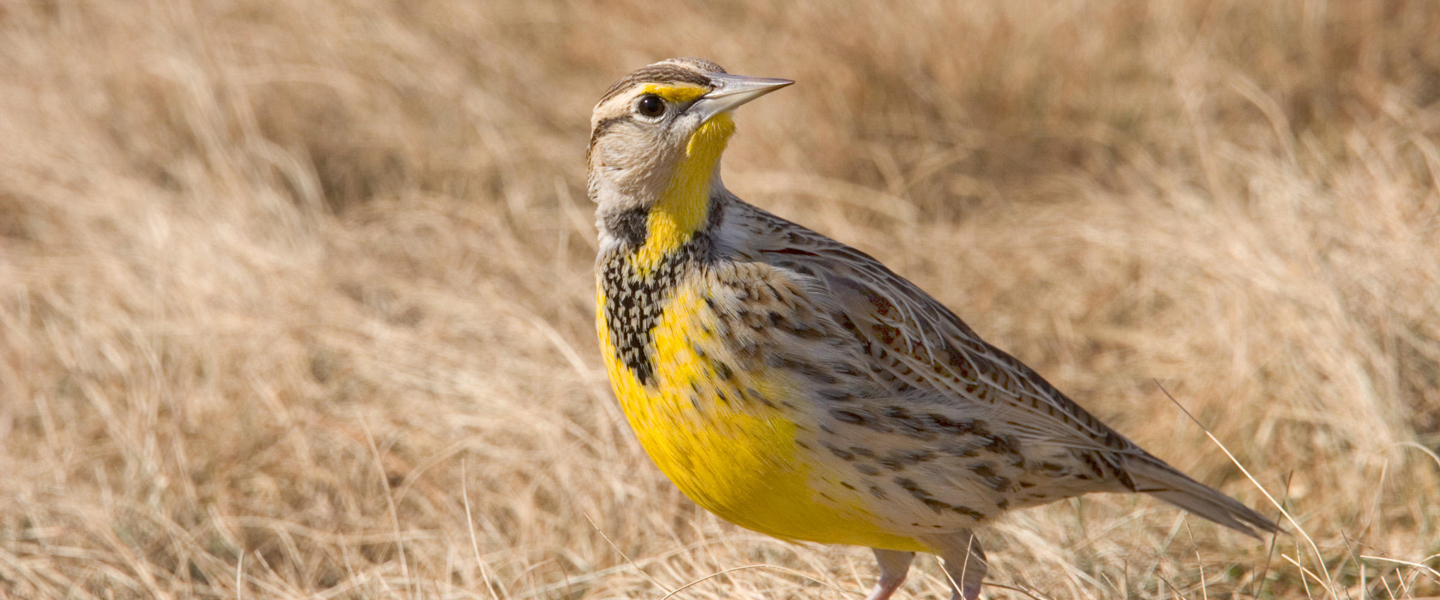
Improving grassland bird habitat: A guide
Upstate Forever, Clemson University, and Conestee Nature Preserve received a grant from The Cornell Lab and Land Trust Alliance's Land Trust Bird Conservation Initiative to study, determine & share best management practices to restore and improve grassland bird habitats. After thorough research by wildlife biology students at Clemson, we're thrilled to share a guide featuring key recommendations.
Click here to download the guide
Improving Habitat for Grassland Birds
Research in the Upper Piedmont of South Carolina by Hall (2006) indicates that reclaimed landfills and similar land features can become suitable habitat for grassland birds with relatively little effort from managers and interested stakeholders. To help improve the suitability of these areas as grassland bird habitat, the following basic considerations and simple adjustments to existing management regimes.
— Drew Lanham, PhD, CWB (Consulting Ornithologist)
- Adjust mowing schedules to reduce the frequency of disturbances to avoid breeding season (April – August) disruptions. This will minimize nest destruction and mortality of ground nesting birds. Leaving strips of unmown vegetation where possible will provide some cover for wintering and migratory species. Additionally, reductions in mowing may have the added benefit of cost-savings to managing authorities, a factor that may further encourage grassland reclamation and bird conservation.
- Planting bunching native warm season grasses (NWSG) will improve habitat suitability for birds with bare ground requirements. NWSG may help to provide better habitat and forage opportunities for grassland bird species. NWSG species such as broomsedge (Andropogon virginicus ), little bluestem (Schizachyrium scoparium) and Indiangrass (Sorghastrum nutans) will likely increase occupancy opportunities for breeding and wintering grassland birds. Planting mixes of native warm season grasses have the added benefit of requiring little maintenance, fertilization, herbicidal treatment or insecticides. Most species are drought tolerant. Established root systems of warm season grasses are extensive and will also aid in minimizing soil erosion. These meadows may also serve as pollinator-rich areas where species such as Monarch butterflies (Danaus plexippus) may proliferate.
- Many species of grassland birds require elevated perches for singing, calling, or as “look out” posts for sighting competitors, mates, predators or prey. Because of the prohibition of deeply rooted woody species that might perforate landfill caps, managers might consider using tall growing native herbaceous vegetation (e.g. coneflowers, sunflowers, Joe Pye, ironweed) as perches and fence posts for installation of bluebird and swallow houses.
- Grasslands are frequently overlooked and underappreciated centers of biodiversity, especially in the Southeast where few are familiar with their important ecosystem function and historic widespread occurrence. Birds in grasslands are often highly visible and charismatic, thus providing inroads for teaching field ornithology, birding and basic tenets of avian conservation.
At-a-Glance ID of Common Native Warm-Season Grasses
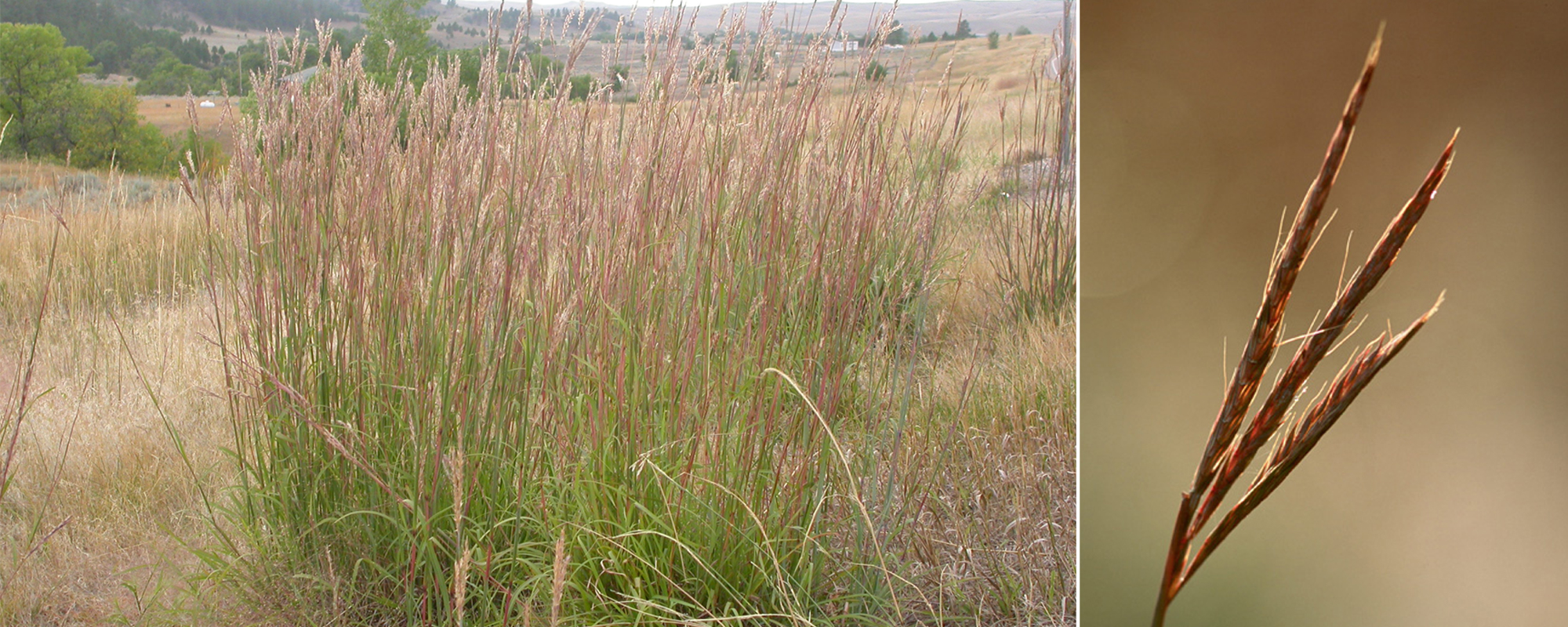
Big Bluestem
Andropogon gerardii
Habitat: Dry to moist prairies and fields
Key ID Features: 4-8' tall. Seed head usually has 3 branches giving it a turkey foot-like appearance.
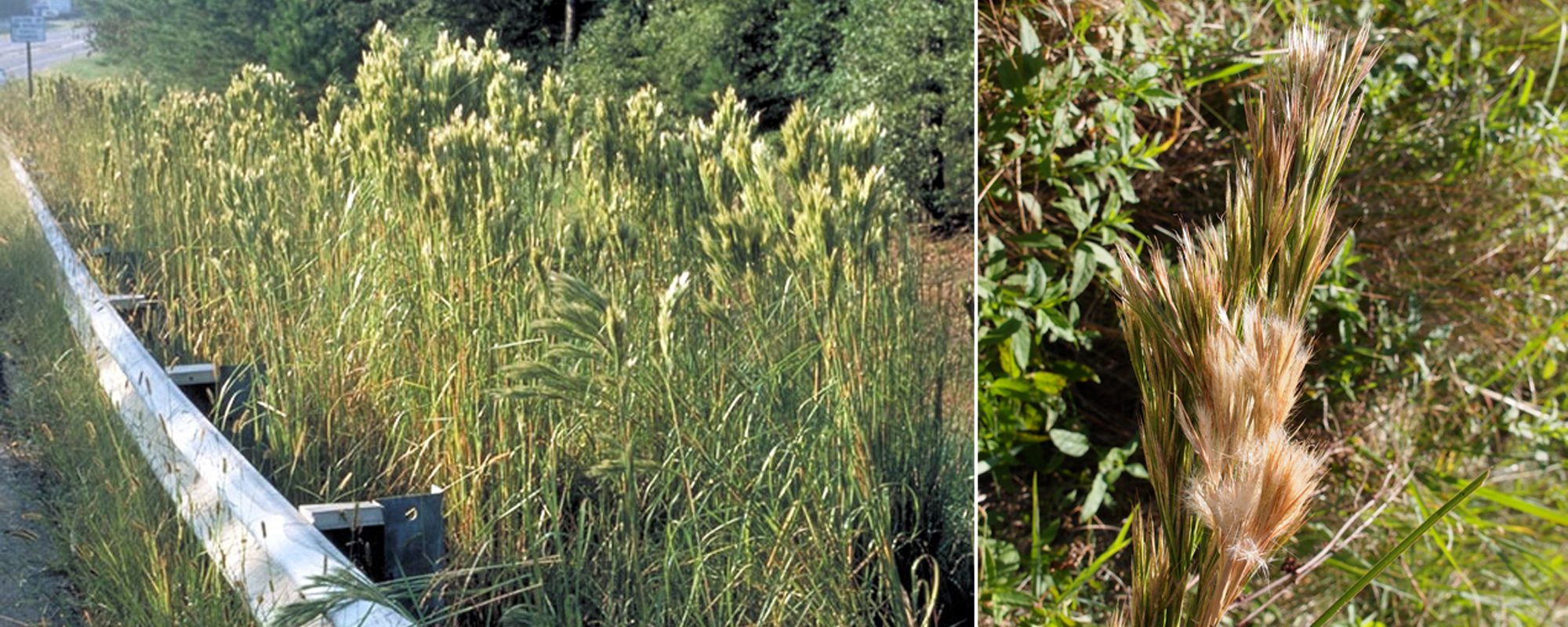
Bushy Bluestem
Andropogon glomeratus
Habitat: Wet ditches or wetland edges
Key ID Features: 2-5' tall. Full and bushy seed heads are dense and feathery, distinct from other Bluestem grasses.
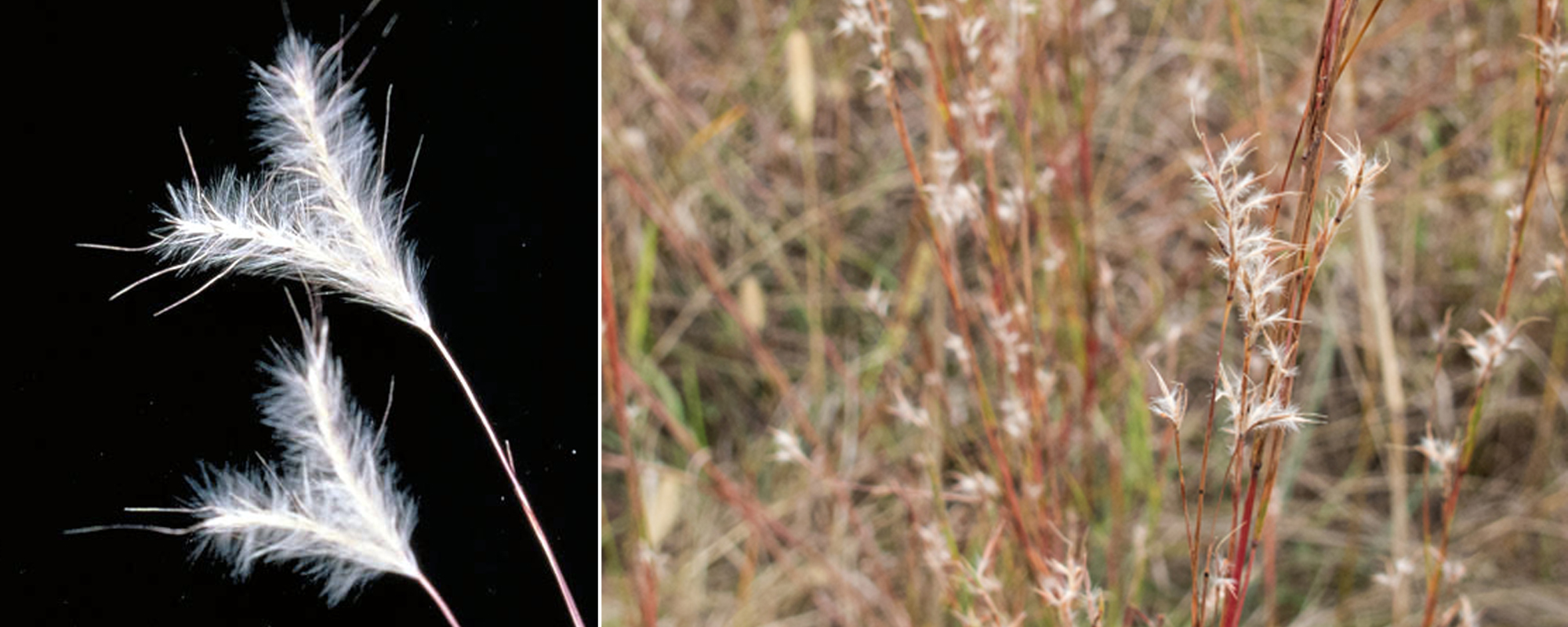
Splitbeard Bluestem
Andropogon ternarius
Habitat: Dry prairies, fields and woodland edges.
Key ID Features: 2-4' tall. Distinct forked pair of silvery spikelets with no long spathe surrounding seed head.
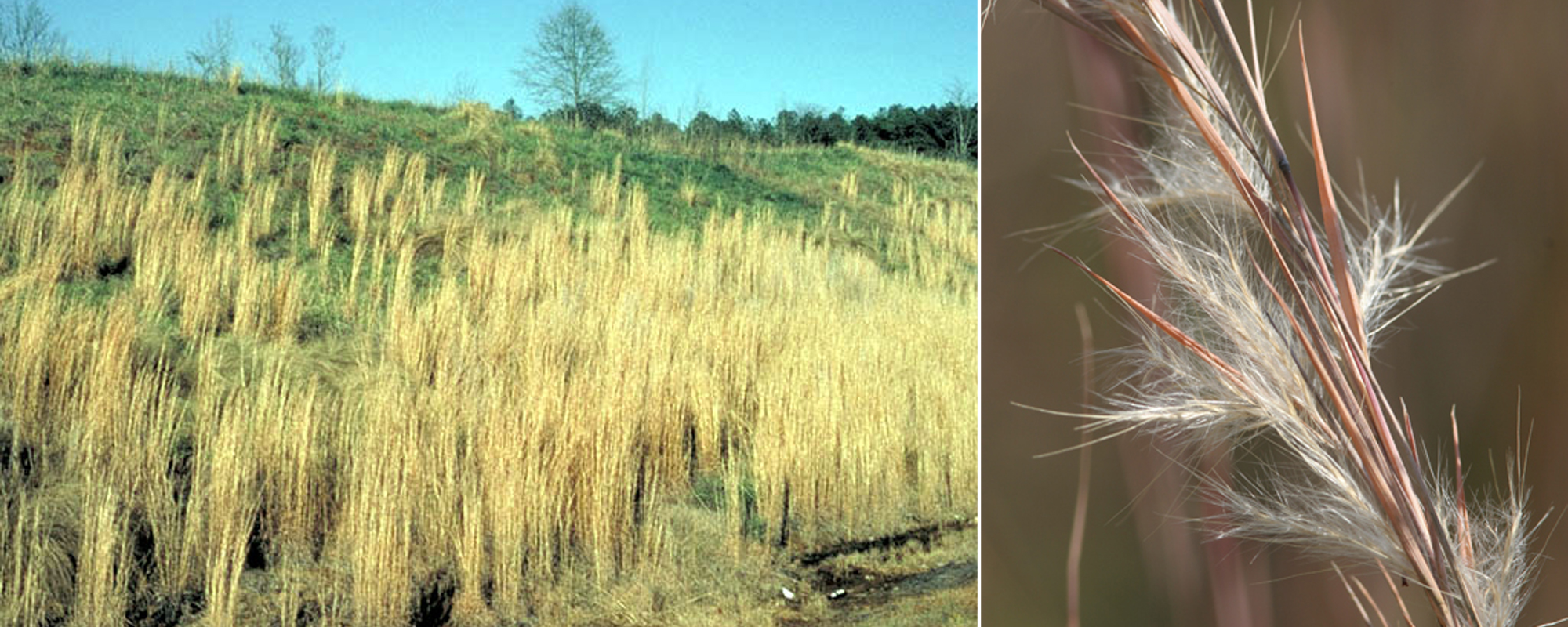
Broomsedge
Andropogon virginicus
Habitat: Dry open or disturbed areas and roadsides. Very common.
Key ID Features: 2-5' tall. Long spathe that encloses the seed head. Bushy foliage turns gold/bronze in the late fall to winter.
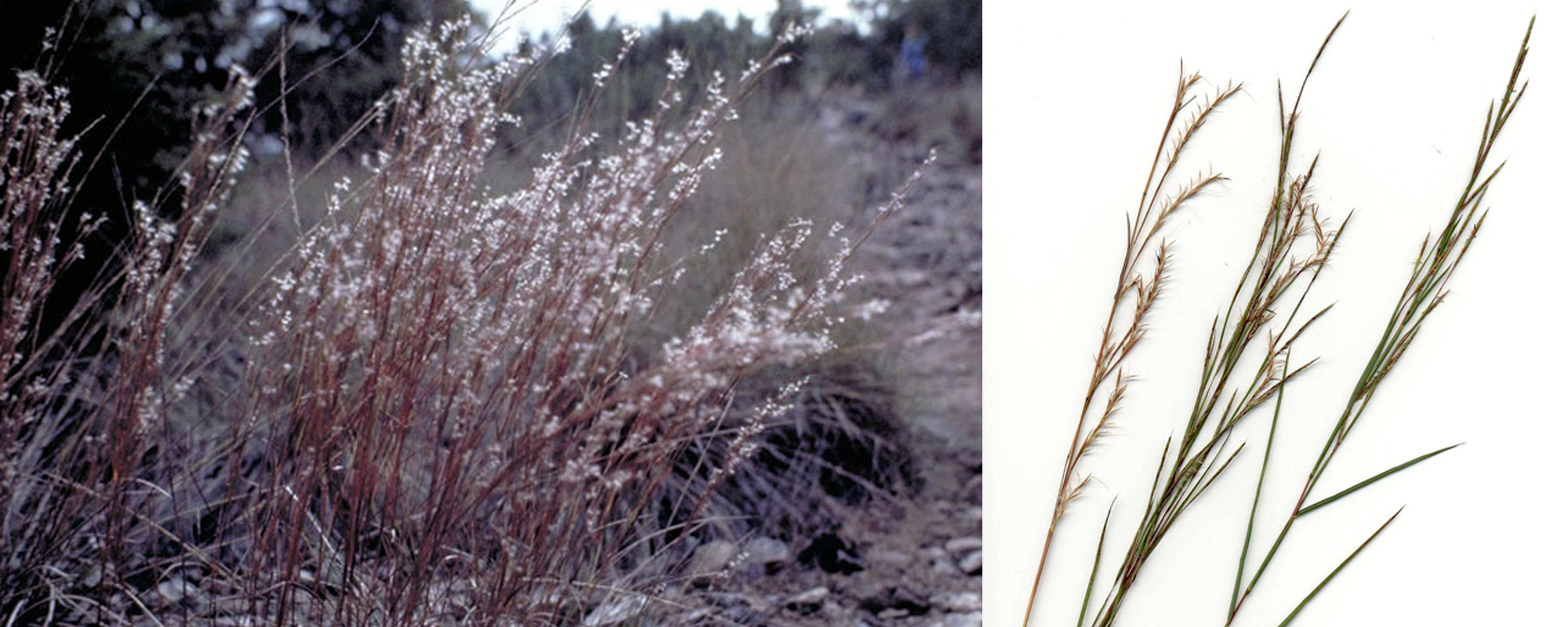
Little Bluestem
Schizachyrium scoparium
Habitat: Dry prairies, fields and woodland edges.
Key ID Features: 2-4' tall. No spathe and single sparse looking seed head. Blueish fine textured foliage.
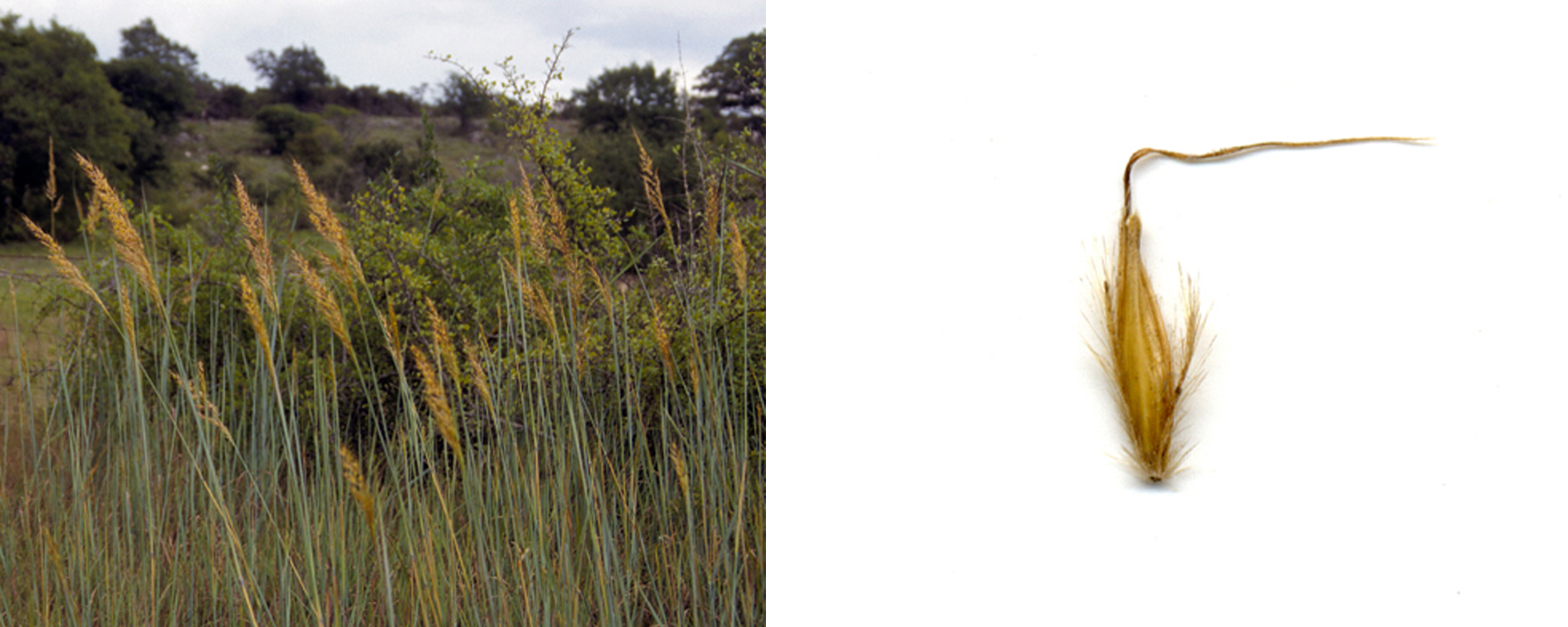
Yellow Indian Grass
Sorghastrum nutans
Habitat: Prairies, fields and open woodlands.
Key ID Features: 3-7' tall. Full, bushy, golden seed head. Each seed has a wiry twisted tip.
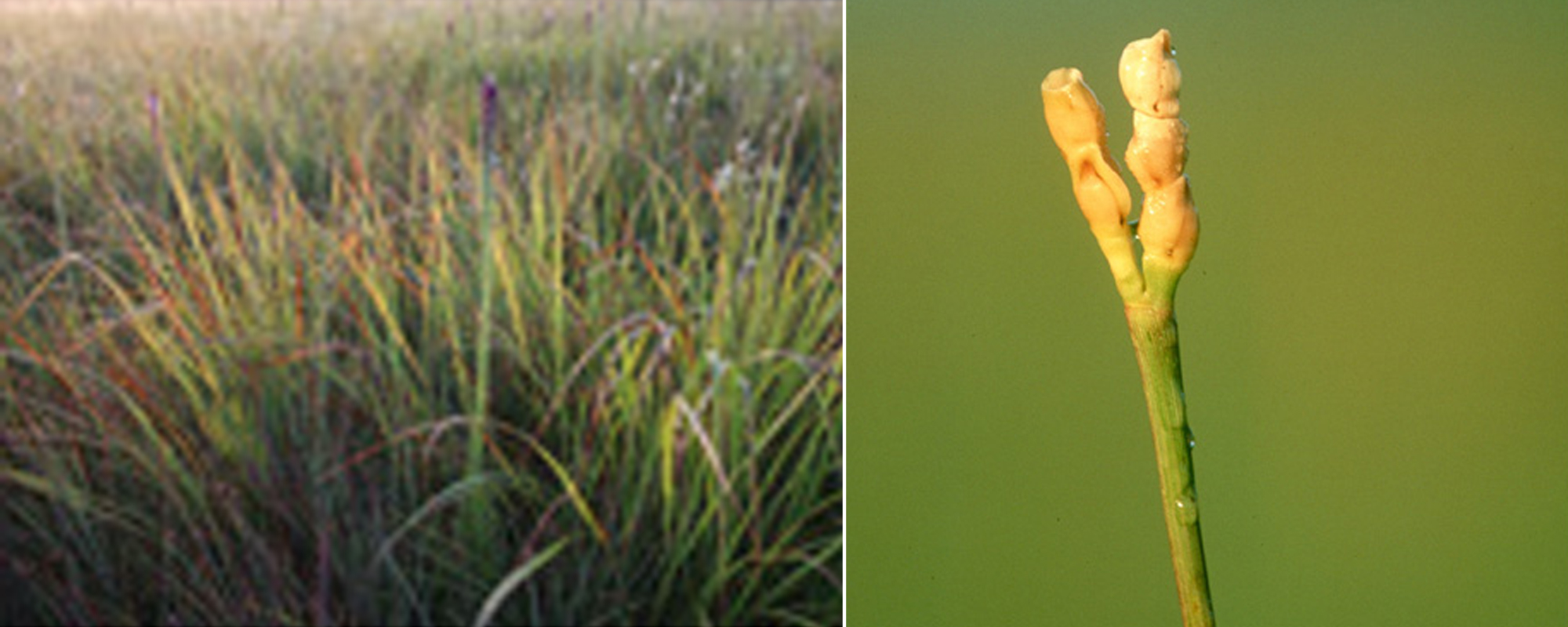
Eastern Gamagrass
Tripsacum dactyloides
Habitat: Mesic prairies and fields
Key ID Features: 3-8' tall. Seeds look like tiny kernels of corn stacked vertically on top of each other.
Hall, Steven T., "Grasslands Birds Using Reclaimed Landfills in the Upper Piedmont of South
Carolina" (2006). Archived Theses. 3556. https://tigerprints.clemson.edu/arv_theses/3556
Eastern meadowlark photo by Rick & Nora Bowers via the National Audubon Society
